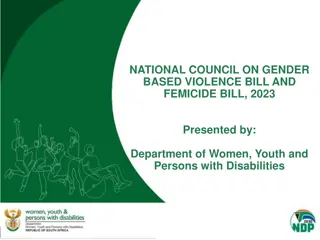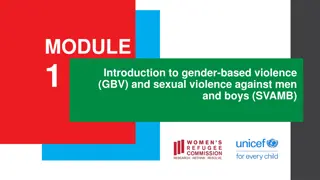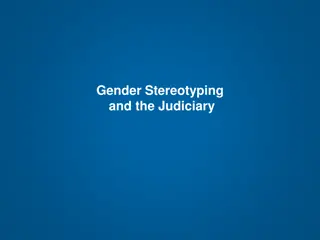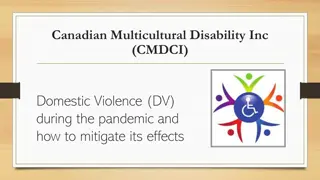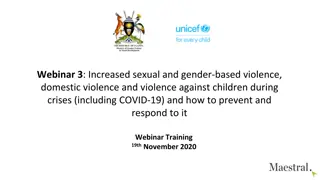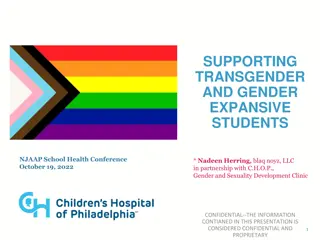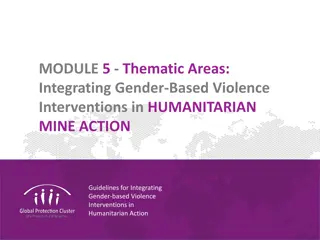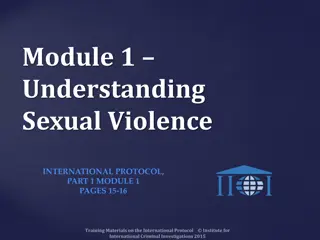Addressing Gender-Based Violence and Creating Safe Learning Environments in Institutions
Gender-Based Violence (GBV) in institutions affects individuals through physical, sexual, or psychological harm. In TVETs, common acts of GBV include intimate partner violence, dowry deaths, rape, and cyber-bullying. Root causes stem from stereotypes, gender norms, substance abuse, and socio-economic inequalities, leading to health issues like STIs, unwanted pregnancy, and mental health challenges. Necessary interventions include care centers, victim-centered services, awareness programs, and policy enforcement to combat GBV effectively.
Download Presentation

Please find below an Image/Link to download the presentation.
The content on the website is provided AS IS for your information and personal use only. It may not be sold, licensed, or shared on other websites without obtaining consent from the author.If you encounter any issues during the download, it is possible that the publisher has removed the file from their server.
You are allowed to download the files provided on this website for personal or commercial use, subject to the condition that they are used lawfully. All files are the property of their respective owners.
The content on the website is provided AS IS for your information and personal use only. It may not be sold, licensed, or shared on other websites without obtaining consent from the author.
E N D
Presentation Transcript
COMBATTING GBV IN OUR INSTITUTIONS AND COMBATTING GBV IN OUR INSTITUTIONS AND CREATING A SAFTEY, CONDUCIVE AND ENABLING CREATING A SAFTEY, CONDUCIVE AND ENABLING ENVIRONMENT FOR EFFECTIVE STUDYING ENVIRONMENT FOR EFFECTIVE STUDYING
WHAT IS GBV ? WHAT IS GBV ? Any act of violence that is gender driven that results in, or most likes to result in physical, sexual, or psychological harm, including act of such harm. Whilst people of all genders perpetrate and experience intimate partner and or sexual violence, men are most often the perpetrators and women and children the victims.(CSSA 2020).
MOST COMMON ACTS OF GBV IN TVETs Intimate partner violence(physical, sexual, psychological & economical). Dowry deaths. Rape. Cyber-bullying. Physical assaults against individuals perceived as gender non-conforming. Request/demands for sex in exchange for improved marks, accommodation in residences, financial support or other needs and benefits.
ROOT CAUSES OF GBV IN TVETs Stereotypes towards student populace in certain communities. Gender norms and social norms influenced by cultural or religious background. Substance abuse. Lack of conducive student residents. Socio-economic inequalities. Misuse position of power. Stereotypes and general hate towards LGBTQI + community.
HEALTH ISSUES BROUGHT BY GBV WITHIN OUR COLLEGES Sexually transmitted infections including HIV. Unplanned/unwanted pregnancy. Depression and anxiety. Drug and alcohol abuse. Post-traumatic stress disorder and low self- esteem. Femicide. Suicide. Fractures. Permanent disability. Chronic pain syndromes.
NECCESARY INTERVENTIONS Initiating response care support and healing centres. Provision of victim centered, survivor focused and accessible quality services. Strengthen awareness programmes Prevention and rebuilding social cohesion. Deepening understanding and knowledge. Enhance strategic institutional wellness desk. Enforce and implement laws and policies. Elevate accountability in all levels. Mental health,GBV, religious and cultural questionnaire in placement tests.
IN CONCLUSSION; SATVETSA in partnership with Dhet and SAPCO are currently embarking on provincial workshops on GBV, Mental health and substance abuse. We currently working with cloud therapist company which provides online therapy session through their app. The company has committed to open their cloud therapist app for free at least for a month so that our students can access their services. SATVETSA is committed in combatting the spread of GBV, mental health and substance abuse, so as to create a safety and conducive environment within our institutions and society at large. We fully support these guidelines that have been developed because they ll seek to address the challenges that were mentioned above. And looking forward to its implementation


